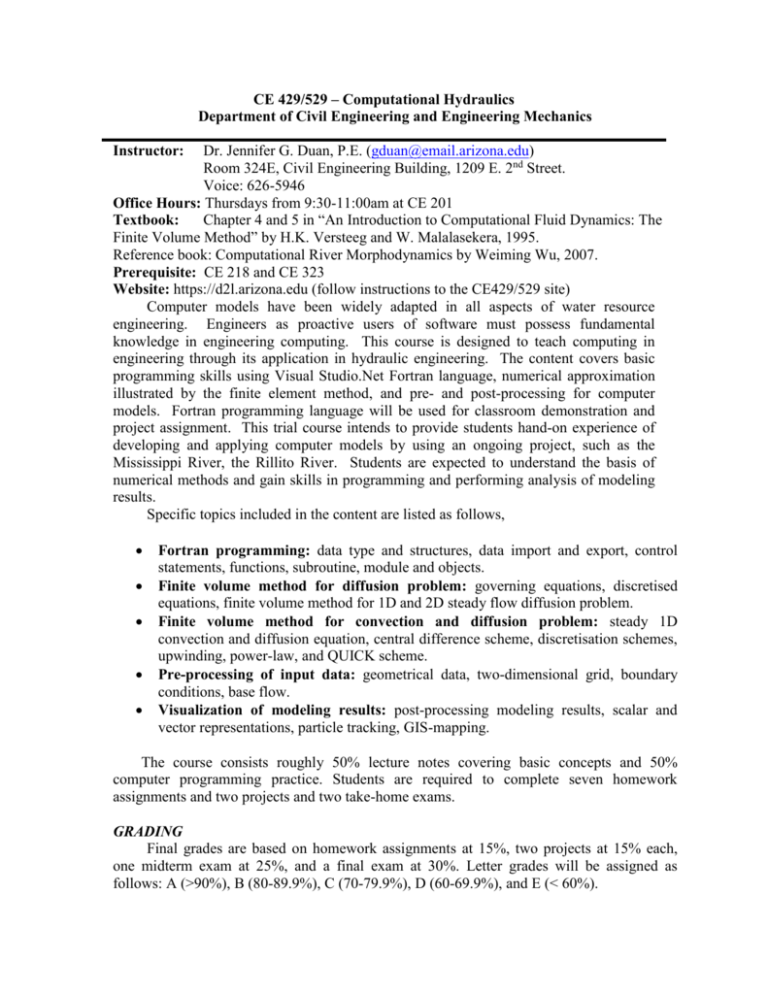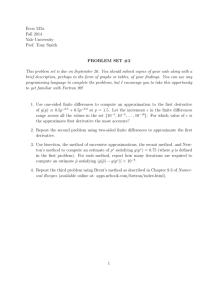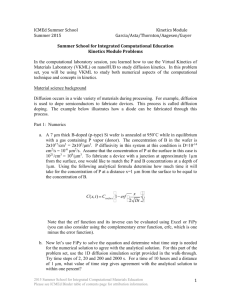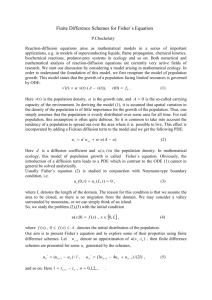Special Topics in Hydrology and Water Resources Engineering
advertisement

CE 429/529 – Computational Hydraulics Department of Civil Engineering and Engineering Mechanics Instructor: Dr. Jennifer G. Duan, P.E. (gduan@email.arizona.edu) Room 324E, Civil Engineering Building, 1209 E. 2nd Street. Voice: 626-5946 Office Hours: Thursdays from 9:30-11:00am at CE 201 Textbook: Chapter 4 and 5 in “An Introduction to Computational Fluid Dynamics: The Finite Volume Method” by H.K. Versteeg and W. Malalasekera, 1995. Reference book: Computational River Morphodynamics by Weiming Wu, 2007. Prerequisite: CE 218 and CE 323 Website: https://d2l.arizona.edu (follow instructions to the CE429/529 site) Computer models have been widely adapted in all aspects of water resource engineering. Engineers as proactive users of software must possess fundamental knowledge in engineering computing. This course is designed to teach computing in engineering through its application in hydraulic engineering. The content covers basic programming skills using Visual Studio.Net Fortran language, numerical approximation illustrated by the finite element method, and pre- and post-processing for computer models. Fortran programming language will be used for classroom demonstration and project assignment. This trial course intends to provide students hand-on experience of developing and applying computer models by using an ongoing project, such as the Mississippi River, the Rillito River. Students are expected to understand the basis of numerical methods and gain skills in programming and performing analysis of modeling results. Specific topics included in the content are listed as follows, Fortran programming: data type and structures, data import and export, control statements, functions, subroutine, module and objects. Finite volume method for diffusion problem: governing equations, discretised equations, finite volume method for 1D and 2D steady flow diffusion problem. Finite volume method for convection and diffusion problem: steady 1D convection and diffusion equation, central difference scheme, discretisation schemes, upwinding, power-law, and QUICK scheme. Pre-processing of input data: geometrical data, two-dimensional grid, boundary conditions, base flow. Visualization of modeling results: post-processing modeling results, scalar and vector representations, particle tracking, GIS-mapping. The course consists roughly 50% lecture notes covering basic concepts and 50% computer programming practice. Students are required to complete seven homework assignments and two projects and two take-home exams. GRADING Final grades are based on homework assignments at 15%, two projects at 15% each, one midterm exam at 25%, and a final exam at 30%. Letter grades will be assigned as follows: A (>90%), B (80-89.9%), C (70-79.9%), D (60-69.9%), and E (< 60%).











